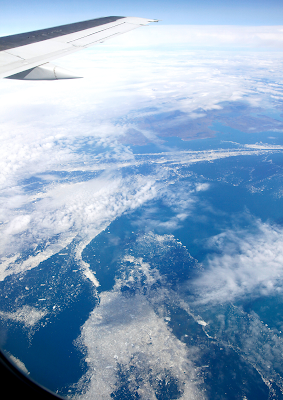 |
| Hadrosaur Eggs |
I have found many fossil feathers (another personal fav) but have yet to find dino eggs or any egg for that matter. While my track record here is beyond sparse, dinosaur eggs have been found on nearly every continent, from the deserts of Mongolia to the floodplains of Montana and the nesting grounds of Patagonia.
The discovery of dinosaur eggs offers one of the most intimate glimpses into the life history of these long-extinct animals. Unlike bones or teeth, eggs preserve direct evidence of reproduction, nesting strategies, and even embryonic development.
Over the last century, paleontologists and citizen scientists have uncovered thousands of fossilized eggs and eggshell fragments across the globe, revealing that dinosaurs laid their clutches in diverse environments ranging from deserts to floodplains.
Early Discoveries — The first scientifically recognized dinosaur eggs were discovered in the 1920s by the American Museum of Natural History’s Central Asiatic Expeditions to Mongolia’s Gobi Desert.
Led by Roy Chapman Andrews, these expeditions unearthed clutches of round, fossilized eggs in the Djadokhta Formation. Initially misattributed to Protoceratops, later discoveries showed they belonged to the bird-like and immensely cool theropod Oviraptor. This corrected attribution changed the understanding of dinosaur nesting, particularly with the revelation of adults preserved brooding on nests.
Asia: The Richest Record — Asia remains the richest continent for dinosaur eggs.
Mongolia: The Gobi Desert has yielded numerous oviraptorid and hadrosaurid eggs, often preserved in nesting sites.
China: The Henan and Guangdong Provinces have produced abundant eggs, including complete clutches of hadrosaurs, theropods, and titanosaurs. Some sites, such as the Xixia Basin, contain thousands of eggshell fragments, telling us that these were long-term nesting grounds. Embryos preserved within eggs, like those of Beibeilong sinensis, provide rare developmental insights.
India: Extensive titanosaur nests from the Lameta Formation demonstrate colonial nesting behavior and some of the largest known egg accumulations.
North America has also yielded important dinosaur egg sites. Montana: The Two Medicine Formation preserves fossilized nests of hadrosaurids like Maiasaura peeblesorum, discovered by Jack Horner in the late 1970s. These finds gave rise to the concept of “good mother lizard,” as evidence suggested parental care and extended nesting.
Utah and Colorado: Eggshell fragments and isolated eggs of sauropods and theropods have been reported, though less commonly than in Asia.
South America: Sauropod Hatcheries — Argentina is home to some of the most significant sauropod nesting sites. In Patagonia, the Auca Mahuevo locality preserves thousands of titanosaur eggs, many with fossilized embryos inside. This site demonstrates large-scale nesting colonies and offers clues to sauropod reproductive strategies, including shallow burial of eggs in soft sediment.
Europe: A Widespread Record — Europe has produced diverse dinosaur egg finds, particularly in France, Spain, and Portugal. In southern France, sauropod egg sites such as those in the Provence region reveal clutches laid in sandy floodplains. Spain’s Tremp Formation contains both hadrosaurid and sauropod eggs, some associated with trackways, linking nesting and movement behavior.
Africa: Expanding the Map — Egg discoveries in Africa are less common but significant. In Morocco and Madagascar, titanosaur eggs have been recovered, suggesting a widespread distribution of sauropod nesting across Gondwana.
Dinosaur eggs fossilize under specific conditions. Burial by sediment soon after laying, mineral-rich groundwater for permineralization, and relative protection from erosion. Eggshell microstructure, pore density, and arrangement allow paleontologists to infer incubation strategies, from buried clutches similar to modern crocodilians to open nests akin to modern birds.
These fossils are remarkable for their beauty and rarity but also for the wealth of biological information they provide. These elusive fossils help us to understand dinosaur reproduction, nesting behaviour, and evolutionary ties to modern birds. I will continue my hunt and post pics to share with all of you if the Paleo Gods smile on me!





















.png)







%20Fram%20Formation%20of%20Nunavut,%20Canada.%20The%20genus%20contains%20a%20single%20species,%20Q.%20wakei,%20known%20from%20a%20partial%20skele.png)
